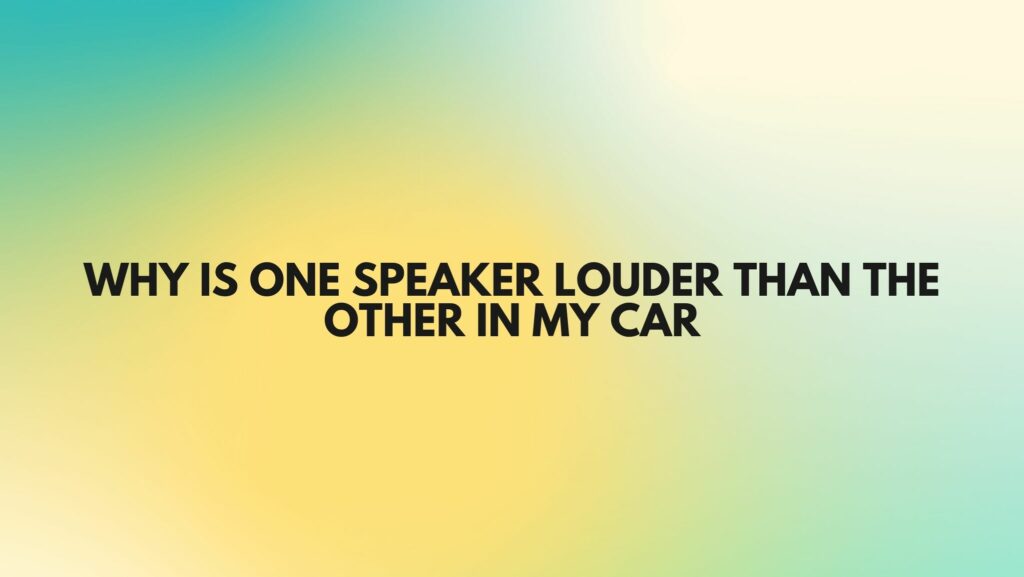A well-balanced and immersive audio experience is a crucial aspect of enjoying music, podcasts, or radio in your car. However, when you notice that one speaker is significantly louder than the other, it can disrupt the harmony of your car audio system and diminish your listening enjoyment. In this comprehensive article, we will explore the common reasons why one speaker is louder than the other in your car and provide troubleshooting steps and solutions to help you restore audio balance and symmetry.
Understanding the Issue
When one speaker in your car is louder than the other, it’s often due to factors related to settings, equipment issues, or speaker placement. Before exploring solutions, it’s important to understand these potential causes:
- Settings and Calibration: Incorrect balance, fade, or volume settings on your car stereo system can lead to one speaker sounding louder or quieter than the other.
- Equipment Issues: Problems with the speakers, amplifier, or head unit, such as damaged components or loose connections, can result in unequal sound output.
- Speaker Placement: Differences in speaker placement or condition can lead to variations in sound quality between speakers.
- Wiring and Connections: Wiring issues, including loose or damaged connections, can result in an imbalance of sound output between speakers.
Troubleshooting and Solutions
To address the issue of one speaker being louder than the other in your car, follow these troubleshooting steps and solutions:
- Check Balance and Fade Settings:
- Examine the balance and fade settings on your car stereo system. Ensure that they are centered or adjusted to your preference, so that the sound is distributed evenly between speakers.
- Inspect Equipment:
- Inspect the speaker that’s quieter, looking for physical damage or loose components. If you find any issues, consider speaker repair or replacement.
- Check the amplifier or head unit for issues that may affect sound quality. Loose or damaged connections can lead to variations in sound output.
- Balance Speaker Placement:
- Ensure that both speakers are placed symmetrically within the car interior. Proper placement can help create a balanced soundstage.
- Experiment with speaker placement to optimize sound distribution and minimize variations in sound quality between the two speakers.
- Wiring and Connections:
- Inspect the wiring and connections for both speakers. Ensure that all connections are secure and not damaged. Loose or faulty connections can lead to variations in sound quality.
- If you identify any wiring issues, consider replacing or repairing the affected wiring components.
- Amplifier or Head Unit Settings:
- Check the settings on your car’s amplifier or head unit for any imbalances or inconsistencies. Ensure that both channels are configured identically.
- Run a sound calibration or balance adjustment feature if your car stereo system offers it. This can help optimize audio settings for your vehicle’s acoustics.
- Upgrade or Replace:
- If, after thorough troubleshooting, you find that one speaker consistently outperforms the other, it may be worth considering an upgrade to your audio equipment to ensure uniform sound quality.
Conclusion
Balancing sound output between speakers in your car is essential for a satisfying listening experience. When one speaker is significantly louder than the other, it disrupts audio harmony and affects sound quality. By systematically addressing potential causes through careful troubleshooting, you can often resolve the issue and restore uniform sound between speakers. Achieving optimal audio balance involves adjusting settings, addressing equipment issues, speaker placement, and wiring connections, which can lead to a rich, balanced, and enjoyable listening experience in your car.


